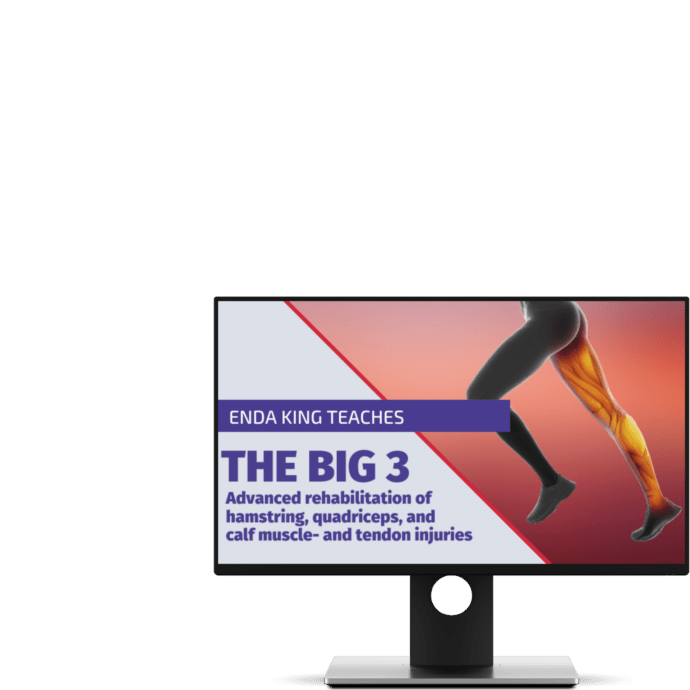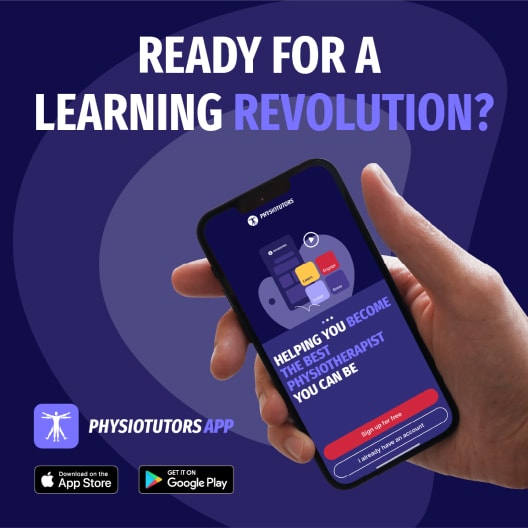Posterior Tibialis Tendon Dysfunction | Diagnosis & Treatment for Physiotherapists

Posterior Tibialis Tendon Dysfunction | Diagnosis & Treatment for Physios
Introduction & Pathomechanism
Posterior tibialis tendon dysfunction, abbreviated as PTTD, is the major cause of an adult acquired flatfoot deformity and medial ankle pain. It is caused by chronic overuse and subsequent tendon inflammation which may impede tendon degeneration in later stages. The prevalence of stage I and II posterior tibialis tendon dysfunction were reported to be 3.3%-10% in women over 40. This prevalence increases with age.

An inflammatory process in or around the posterior tibialis tendon (tendinitis or tenosynovitis) usually lies at the base of symptoms. Repetitive microtrauma due to for example overpronation of the foot has been described to lie at the base of the condition.
This leads to loss of function of the posterior tibialis tendon and collapse of the medial longitudinal arch. This increases strain on the medial foot and ankle ligaments. Gradually, the medial ligaments (deltoid ligament and calcaneonavicular ligament) become elongated and flatfoot deformity is acquired. It may gradually become chronic and can be accompanied by degenerative changes in the tendon. Acute trauma is rarely the cause of PTTD.
4 stages have been defined:
- Stage 1 presents with swelling and tenderness behind the medial malleolus along the course of the posterior tibialis tendon. The foot is flexible and the medial longitudinal arch is maintained. In this stage, a slight weakness and pain with inversion of the foot may be present.
- Stage 2 presents with less swelling, but a collapse of the medial longitudinal foot arch becomes evident. In this stage, the foot is flexible and the flatfoot may be corrected. It becomes gradually difficult or almost impossible to invert and plantarflex the foot and single-leg heel raise may be affected.
- In stage 3, fatigue, aching in the leg together with a reduced walking capacity becomes evident. The flatfoot deformity becomes rigid and cannot be corrected. Loss of ability to invert and plantarflex the foot is the hallmark sign.
- With stage 4, alongside the fixed flatfoot deformity, lateral ankle pain may develop due to fibular impingement against the sinus tarsi. Instability and limping may be present.
Follow a course
- Learn from wherever, whenever, and at your own pace
- Interactive online courses from an award-winning team
- CEU/CPD accreditation in the Netherlands, Belgium, US & UK
Clinical Presentation & Examination
Signs & Symptoms
The following signs & symptoms can be indicative of posterior tibialis tendon dysfunction:
- Gradual onset of pain and swelling of the medial hindfoot and along the course of the tendon, often present for months or years before patients seek help
- Patients can acquire a flattening of the foot arch in later stages
- Commonly the foot is hurting upon longer walks and walking capacity is impaired
- Participation in sports becomes almost impossible
- Lateral ankle pain may be present as well due to the impingement of the fibula on the sinus tarsi in later stages
Examination
The foot shows signs of swelling behind the medial malleolus. Palpation of the tendon reveals tenderness along its course behind the medial malleolus and insertion on the navicular tuberosity. In later stages, flattening of the medial longitudinal arch may be observed as the “too many toes sign” is apparent.
The active examination may reveal the following:
- Difficulty standing on toes
- Pain and difficulty to invert and plantar flex the foot
- A positive navicular drop test
Mobility of the ankle and subtalar joint can be assessed to determine if the flatfoot is flexible or rigid.
Follow a course
- Learn from wherever, whenever, and at your own pace
- Interactive online courses from an award-winning team
- CEU/CPD accreditation in the Netherlands, Belgium, US & UK
Treatment
Ross et al., 2018 showed a paucity of high-quality research for the conservative management of posterior tibial tendon dysfunction. Nonetheless, the following principles can be used.
Progressive resistance exercises to strengthen the weakened tibialis posterior and improve the medial longitudinal foot arch are recommended in early stages to prevent further progression of the condition.
Slow and heavy resistance training to (re)gain calf strength and to promote tendon adaptation.
Stretch-shorten cycle exercises to reintroduce the patient to more demanding activities
Tibialis anterior strengthening to support the tibialis posterior in maintaining the medial longitudinal arch. The foot arch may be further supported passively with orthoses. Talocrural, subtalar, and midfoot joint mobilizations to avoid the development of a rigid foot.
References
Follow a course
- Learn from wherever, whenever, and at your own pace
- Interactive online courses from an award-winning team
- CEU/CPD accreditation in the Netherlands, Belgium, US & UK
THE BIG 3 - ADVANCED REHABILITATION OF HAMSTRING, QUADRICEPS, AND CALF MUSCLE- AND TENDON INJURIES


What customers have to say about this course
- Ivo Rigter07/11/25The Big 3 Prima informatieve cursusDavid Norenlind09/02/25Fantastic course on the topic of muscle and tendon injury The course does a great job of summarizing the research in the field and Enda provides clinical expertise along the way. A must-do course for anyone wanting to deepen their knowledge of muscle and tendon injuries.
- Senne Gabriëls25/12/24Worth the investment! This was my first online experience with courses. It was a very comprehensive and complete course. Management of tendon and muscle conditions in the lower limb became very clear in a way that no stone remained unturned.Eric van Bree09/12/24revalidatie onderste exstremiteiten zeer nuttig om je inzicht te vergroten bij revalidatie van sporters met klachten aan de onderste extremiteiten
- Ruben06/12/24Awesome info I really enjoyed the course. Could not recommend it enough!Thessa Budding06/12/24BIG 3 Interessant en meteen toepasbaar in de praktijk!
- Joris Bonarius25/11/24Informative and Efficient A very usefull course as an sportsphysio. Focussing on all important factors in injury risk, prevention, rehab and more!Pete23/11/24Course Summary I thought the course presented great content and was well organized. The format moving from general to injury specific was easy to follow. It could have been helpful to have a few more narrative sections, especially for the Case studies. Being in a High Performance setting, the course also allowed me to get some confirmation bias while at the same time providing the foundational understanding of tissue biology. The exercises and progressions also provided an alternative for the clinician and performance specialist.
- Bas Slieker02/10/24Very detailed course I found the course to be very well structured in logical and clear steps. A nice balance between evidence and practical tools! I think they do a great job throughout the course of making it clear that injuries and recovery are both biomedical and psychosocial. In doing so, they highlight the complexity of the human being and discuss many of the risk factors and pitfalls/points of attention during the rehabilitation of the big 3!Pascal Van de Kamp24/09/24Very structured, thanks Very structured, covering everything from anatomy to injury to rehab and movement patterns. Quizes were a bit annoying after every chapter. Still enjoyed it, refreshing course to stay sharp in my rehab plans.
- Gustav Hübinette30/01/24The Big 3 - Advanced Rehabilitation of Hamstring, Quadriceps, and Calf Muscle- and Tendon Injuries REVIEW OF THE BIG 3
I experienced the course as very well-structured, maintaining a clear thread throughout the entire program. The content is clearly based on updated evidence, providing numerous valuable tips and tricks for implementing rehabilitation of THE BIG 3.
What I had wished for to be different is to include more recorded lectures, as there is currently a considerable amount of test-based information.Yoran Deleu30/12/23The Big 3 - Advanced Rehabilitation of Hamstring, Quadriceps, and Calf Muscle- and Tendon Injuries Well structured course from the theoretical background to clear practical exercises needed for rehabilitation! - Adam Stewart14/11/23The Big 3 - Advanced Rehabilitation of Hamstring, Quadriceps, and Calf Muscle- and Tendon Injuries VERY THOROUGH AND EXCELLENT JOB USING EVIDENCE BASED PRACTICE
Enda does a great job with this course and dives into as much detail as you would like throughout. Excellent job of keeping the most up-to-date information in the presentation. Takes time to get through it all, but very worth itOlivier Gouvernet11/10/23The Big 3 - Advanced Rehabilitation of Hamstring, Quadriceps, and Calf Muscle- and Tendon Injuries BIG §
The course is very well structured, the anatomical reminders are relevant, each stage of rehabilitation is well detailed and the videos of the exercises make it easy to see and understand what needs to be monitored and done.
In my opinion, the last phases of rehabilitation are the most interesting, as they are rarely covered. This helps to reduce the gap between the load at the end of treatment and the load of a return to sport. - Jeremy Beyer05/09/23The Big 3 - Advanced Rehabilitation of Hamstring, Quadriceps, and Calf Muscle- and Tendon Injuries An excellent course on the rehabilitation and management of lower extremity muscle & tendon injuries! Enda covers serious range in this course with lessons on muscle & tendon physiology all the way to late stage rehab and discussions around power & reactive strength development. This course is comprehensive and covers many of the overlooked aspects of muscle and tendon rehab. Enda highlights foundational rehabilitation concepts in an easy to digest manner that is guaranteed to influence the way you practice.Beppeke Molenaar04/05/23The Big 3 - Advanced Rehabilitation of Hamstring, Quadriceps, and Calf Muscle- and Tendon Injuries EXCELLENT COURSE, INCREDIBLY KNOWLEDGEABLE
This is a fantastic course, with loads of information that is very applicable to daily practice.
I think this course has offered me the most in terms of learning and professional development out of all the courses I’ve done so far.
The set-up of the course is really well-structured. The videos are clear, the information in the text is evidence-based, very in-depth, and at the end of each unit, you can find further readings for anyone who wants to dive even deeper into the material.
I would highly recommend this course! - Badrinath31/03/23The Big 3 - Advanced Rehabilitation of Hamstring, Quadriceps, and Calf Muscle- and Tendon Injuries The presentation is quite evidence based and evidence informed. It is presented in a structured manner. The author has put lots of effort. It is an application based course.Frederik Adriaensens30/12/22The Big 3 - Advanced Rehabilitation of Hamstring, Quadriceps, and Calf Muscle- and Tendon Injuries VERY NICE OVERVIEW OF ALL THE INFLUENCIAL MECHANICS AND REHAB OPTIONS
Thanks for the excellent refresher! - Aemy den Hollander04/05/22The Big 3 - Advanced Rehabilitation of Hamstring, Quadriceps, and Calf Muscle- and Tendon Injuries AWESOME
the amazing amount of detail Enda gives was a huge Eye opener for me.
Not the regular elearning i was used to. love this!Nicolo16/01/22The Big 3 - Advanced Rehabilitation of Hamstring, Quadriceps, and Calf Muscle- and Tendon Injuries USEFUL AND INSPIRING
This course is really useful and well made.
If you really can learn all the notions , you’ll be a better physiotherapist for sure.




